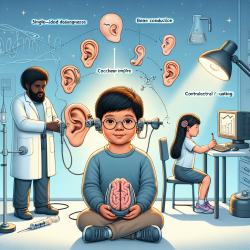Understanding Solitude: Insights for Practitioners
The concept of being alone is multifaceted, encompassing a spectrum of interpretations that vary significantly between adolescents and adults. Recent research titled What does it mean to be alone? An analysis of interpretations of solitude among adolescents and adults provides valuable insights into these interpretations. As practitioners, understanding these nuances can enhance our ability to support individuals in navigating their experiences of solitude.
Key Findings from the Research
The study analyzed responses from 645 adolescents and 444 adults, revealing four primary themes in how solitude is perceived:
- Physical Separation: Both adolescents and adults often described being alone as a physical state of being apart from others.
- Loneliness: More adults than adolescents equated being alone with loneliness, highlighting a significant emotional component.
- Positive Experience: Many respondents across both age groups recognized solitude as an opportunity for relaxation and self-reflection.
- Negative Experience: Adolescents more frequently associated solitude with negative emotions, such as boredom or sadness.
Implications for Practitioners
Understanding these themes can guide practitioners in tailoring interventions to better meet the needs of their clients. Here are some strategies to consider:
- Addressing Loneliness: For adults who equate solitude with loneliness, practitioners can focus on building social connections and fostering a sense of community. Encouraging participation in group activities or online communities can help mitigate feelings of isolation.
- Promoting Positive Solitude: Highlighting the benefits of solitude, such as increased self-awareness and relaxation, can help individuals reframe their perceptions. Practitioners can guide clients in identifying activities that they enjoy doing alone, such as reading, meditating, or engaging in creative pursuits.
- Understanding Adolescent Perspectives: Adolescents may need support in recognizing that solitude can be a positive experience. Practitioners can help them develop coping strategies for dealing with boredom and negative emotions, such as journaling or setting personal goals.
Encouraging Further Research
This study underscores the complexity of solitude and its varied interpretations. Practitioners are encouraged to delve deeper into the topic, considering factors such as cultural influences and individual personality traits. Further research can enhance our understanding and improve therapeutic outcomes for those who struggle with being alone.
To read the original research paper, please follow this link: What does it mean to be alone? An analysis of interpretations of solitude among adolescents and adults.










